Choice suitable wallpaper- This is the most important and most difficult task in the repair process. From the structure color range and the plot of the selected materials will depend on the practicality, aesthetics and durability of the created design.
The issue of correct choice of materials is especially important when gluing several types of wallpaper at once. Although this approach allows you to solve several problems in the interior at once, even minor errors will affect the functionality of your renovation - and, consequently, the appearance rooms.
The combination of 2 types of wallpaper involves creating combinations not only from materials of different shades, but also from wallpaper that differs in composition and structure. That is why, in the process of choosing such materials, it is extremely important to pay attention not only to the harmonious combination of patterns and colors, but also to similar practical characteristics.
The advantages of combining two types of wallpaper

The combination process is not only an opportunity to create and achieve stylish design, emphasizing the features of the layout and highlighting some accents in the interior. This approach allows solve a number of practical problems.
In particular, with a harmonious and correct combination of several wallpapers of different types, the following effects can be achieved:
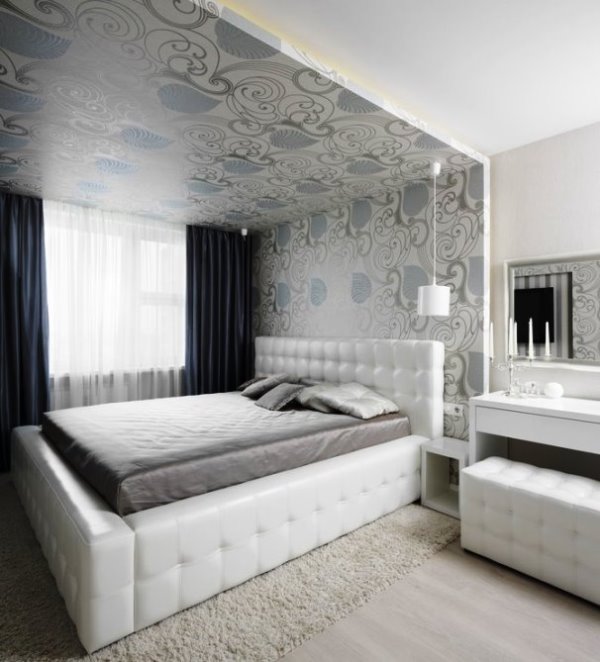

One of the important features of this method is the ability to implement a huge number of ideas for two types of wallpaper, and the success of common methods will not depend on the size, layout, lighting and other parameters of your rooms. Enough observe several principles of double combining. Thanks to this versatility different types are increasingly being used to decorate interiors.
Principles of double combination
It’s easy to guess how to combine two types of wallpaper using the example of images of finished interiors using several materials. That is why, to create a stylish design, it is not necessary to involve specialists: you can show your imagination and create a creative and effective interior even without outside help.
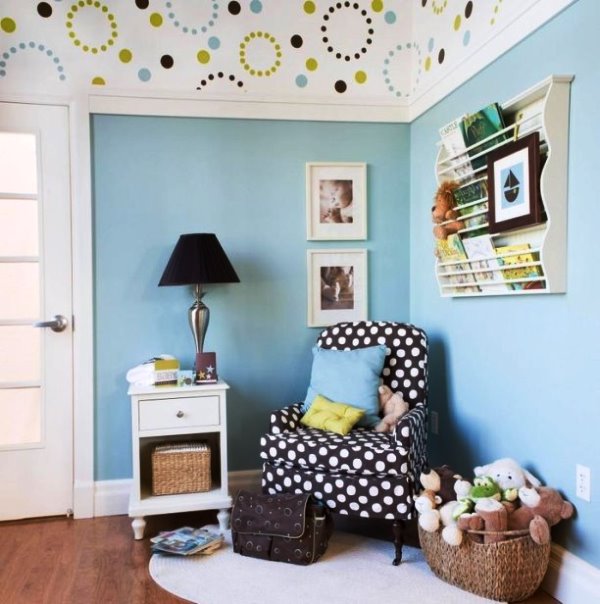
However, you will have to figure out some practical issues of choosing wallpaper for such a finish yourself, so we recommend that you pay attention to a number of important principles of double combination:

Advice: It is advisable to choose wallpaper of the same price category, purchase materials from the same store and stick to a single brand. Some manufacturers produce special collections of wallpaper for combining, selected according to textures and shades, and often include textiles in the set: you can choose the right one, bedspreads, capes for upholstered furniture in one color and pattern palette.
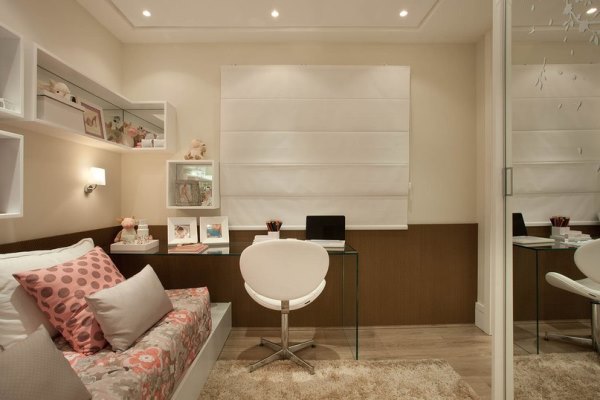
The combination of two types of wallpaper in the interior should depend on the purpose of the room and the harmony of materials. For example, it can be combined with, but such materials are not suitable. look harmonious with non-woven, fiberglass wallpaper, and with paper and non-woven coverings, but each of these materials has its own operating characteristics.
Features of wallpapering in different rooms
Depending on the properties and external characteristics wallpapers of different types are glued only in certain areas walls in the home interior. Most often, the combination of two types of wallpaper is carried out in living rooms: , bedroom and nursery. Your mood and well-being will depend on the correct combination in these rooms.
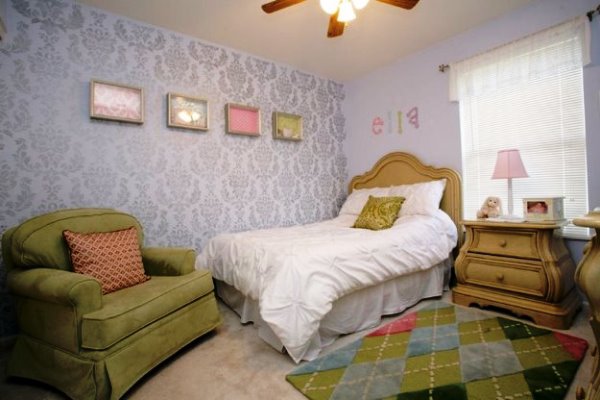
Remember! In rooms of this type it is advisable to use only environmentally friendly clean materials, and also take into account their anti-allergenic properties and the absence of toxic paints in the images.
The living room can be decorated with almost any materials. or halls are suitable if you do not plan to renovate for a long time: over time, such materials may lose their shape and appearance. Vinyl and belong to more durable materials, textile fabrics will perform a decorative function, inferior to other types of wallpaper in terms of quality parameters, and will allow you to create an absolute look on the wall, but will be quite difficult to remove from the surface.
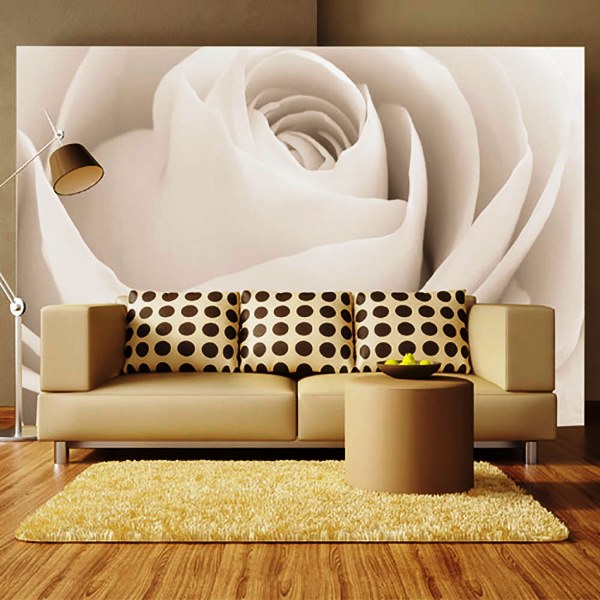
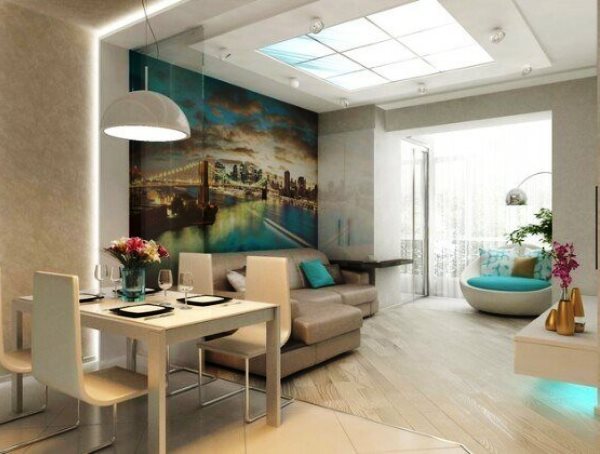
Using realistic images or perspective, you can visually increase the space of your room. If desired, you can use ordinary wallpaper in the form of inserts to imitate panels or paintings.
If you have rooms with an unusual layout, you can disguise or, conversely, emphasize some details of such an interior. For example, highlight niches, ledges and partitions You can use wallpaper with a large relief or pattern. Quite often, such designs are decorated with wallpaper of a more or brighter shade, which creates contrast in the interior.

The peculiarity of using two types of wallpaper to transform the interior can be considered the ability to create stylish combinations in almost any form. The result of your work will depend only on the correct combination of shades and textures.
Since even with the help of elementary combinations you can transform the interior beyond recognition - such finishing methods will allow each of you to feel like a designer and turn a lot of original ideas into reality.
Wallpaper is one of the most common materials for decorating the walls of residential premises - a wide selection of patterns, unlimited colors, various types and textures provide the widest opportunities for creating a unique interior.
So, you can feel like a designer in the process of decorating the walls with different wallpapers in one room, it could be a living room, a kitchen, a bedroom or a nursery - see the photo below.
Using the classic approach, you need to be guided by the color of the wallpaper, texture and pattern. Most often, wallpaper is combined vertically or horizontally.
When choosing this method minimum quantity There are two colors, the maximum is limited only by the idea and imagination of the performer. You can use the technique of a figured joint - two canvases folded together are cut with a wave or teeth. Gluing such a strip is not easy, but the result will be very original.
It is best if the texture of the wallpaper is the same - this promotes a greater combination of wallpapers of different colors and allows you to use one wallpaper glue. True, today the choice of glue is very rich; you can buy universal glue that will suit different types wallpaper
Photo of a vertical wallpaper combination in one room



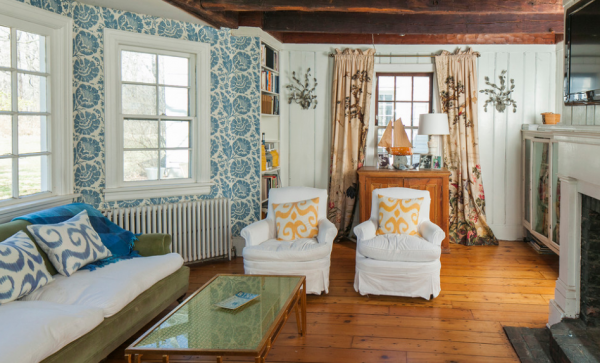


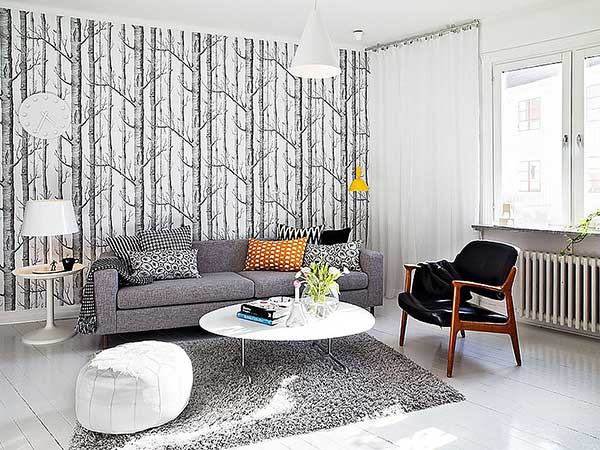
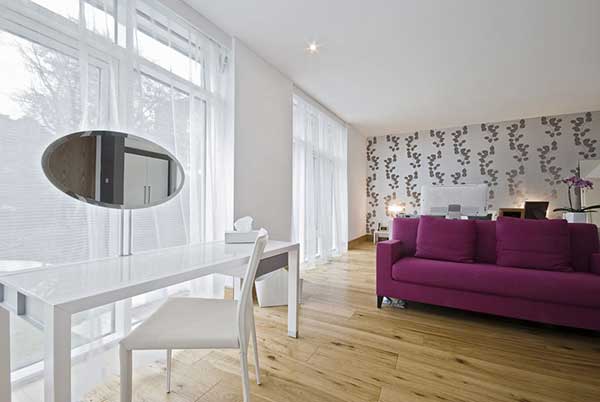
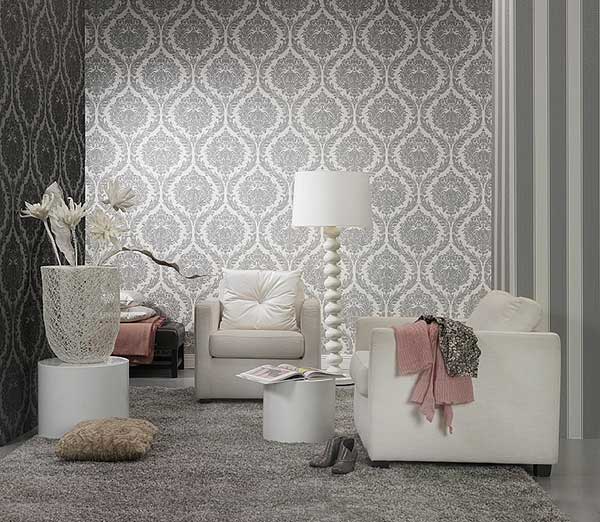
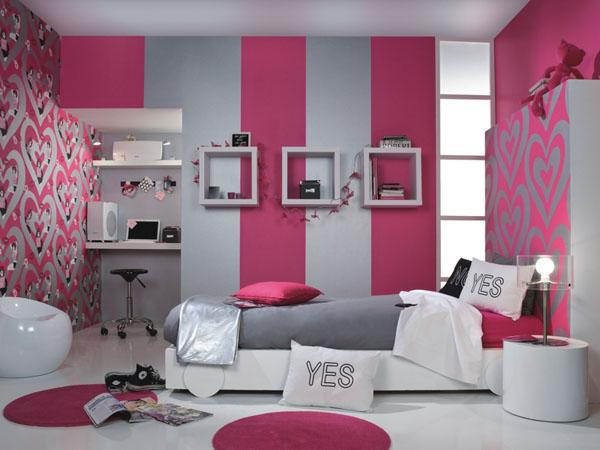
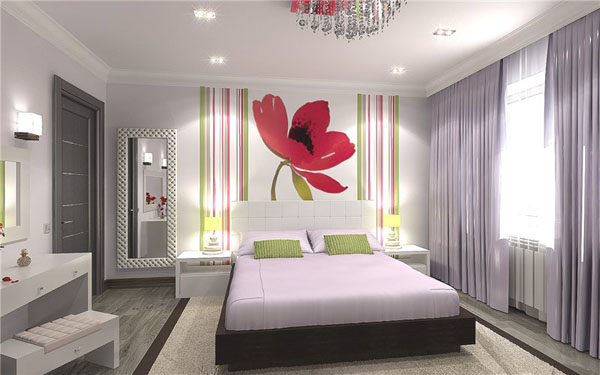
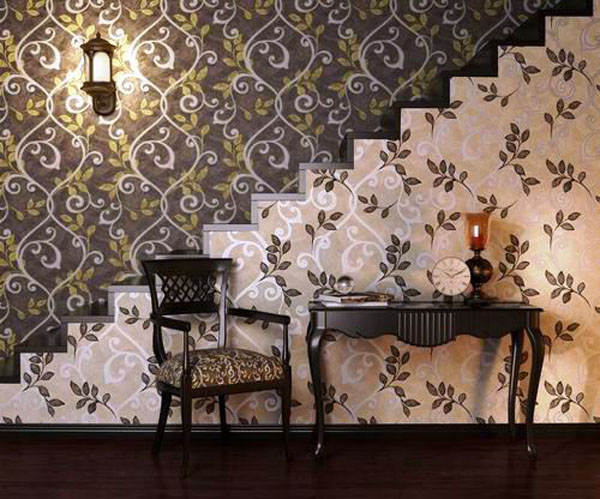
Uniformity of texture is necessary rather so that the thickness of the wallpaper matches, otherwise the junction of the strips will be too noticeable. So, we’ve sorted out the first option of how to hang two types of wallpaper in one room, let’s move on to the second.
We glue different wallpapers when combining horizontally
If horizontal division is used, usually the number of different colors does not exceed two. The classic combination is the lower part is darker than the upper. Furniture upholstery should match top part wallpaper, if the furniture matches the bottom stripe, pieces of furniture can visually blend into the background.
When planning to decorate one room with different wallpapers, individual sections of the wall can be decorated in a patchwork manner, arranging square fragments haphazardly or in a checkerboard pattern (see photo). In the same way, you can decorate part of the wall, creating a real panel. The main thing is to cut and glue all the elements carefully so that uneven joints do not hurt the eyes.
Horizontal combination of wallpaper is manifested in the fact that the walls of one room are divided into two parts horizontally by wallpaper. To properly hang two types of wallpaper in one room using horizontal combination, you need to accurately measure the level where the joint will be located. The wallpaper connection line should form a right angle with the wall, otherwise the entire wall can be damaged.
Photo of a horizontal wallpaper combination in one room

When gluing different wallpapers using the horizontal method of combining, stick the top strips first. The junction is left un-glued for 2-3 cm. After this, the strips are glued from below, also leaving a small area un-glued. After the walls are completely dry, excess sections of wallpaper are cut off, and the joints of the wallpaper are glued and covered with plinth.


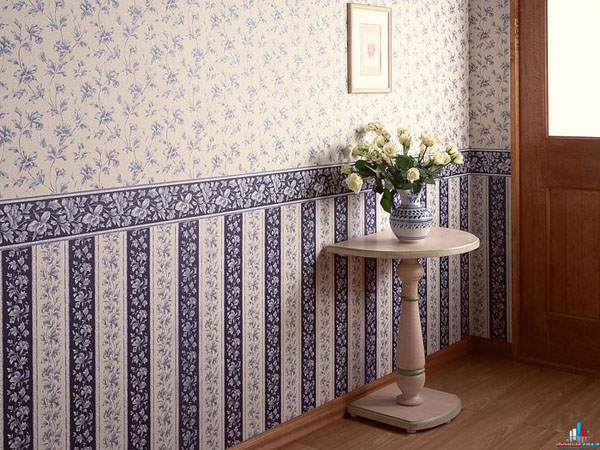

What to do with leftover wallpaper?
Very often you can find a completely unusual approach to pasting walls. various wallpapers. It happens that there are sheets of wallpaper that you really like, but there is nowhere to put them. If you have accumulated quite a lot of such leftovers and it would be a pity to throw them away, then you can decorate one wall with them, using various combinations and a creative approach, because how to glue different wallpaper in your room it's up to you!
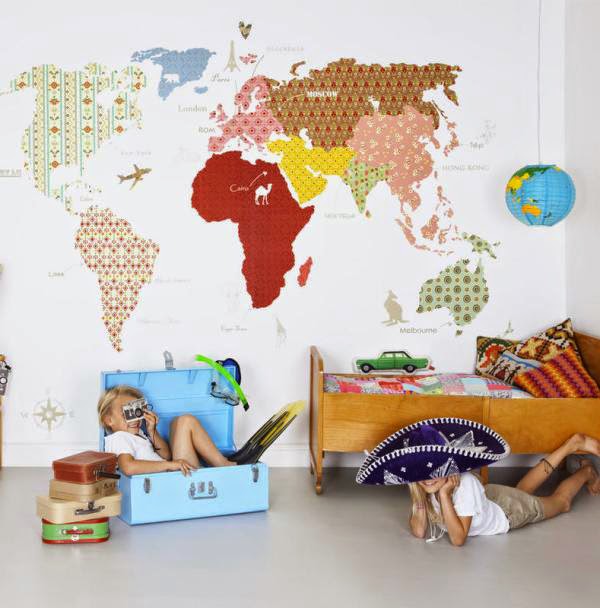
The designer awakens in everyone who chooses wallpaper. Try to create a unique interior yourself, and if you don’t succeed, or over time you don’t like it, you can always re-paste the wallpaper on one of the walls. This is the beauty of hanging different wallpapers in the same room!
Accent wall
Risk is, of course, a noble thing, but caution is never superfluous. As the aphorism goes, “folly must be done with caution.” This saying would be worth taking into account for everyone who is engaged in or intends to engage in interior design. Choosing a rich palette and dynamic ornament is always a risk. But there is an opportunity to significantly reduce it and play a safe game. “How to do this?” you ask. The answer is simple: know, feel and observe moderation.
Even a small dose of bright, energetic color or pattern can make a very bold statement. Such inclusions are called accents. We have already written about that. This time we will dwell in more detail on such an element as an accent wall.
What is an accent wall?
This is a special wall, different in design from the other walls in the room. An accent wall may differ in color, texture, pattern, and material. The accent can be the entire surface of the wall or only part of it in the form of a wide strip.

What is the point of creating an accent wall? Firstly, this makes it possible to introduce a share into the interior bright color, but in small, strictly limited quantities. In addition to color, you can introduce additional textures, shapes, and lines into the interior. Thanks to the accent wall, the surfaces of the room do not look uniform and flat. The interior turns out to be spectacular and extraordinary.

Secondly, the creation of accent surfaces allows you to manipulate attention. People entering the room will first notice the accent wall and what is next to it. This way you can attract interest to something worthy and divert attention from some unattractive object.

Accent wall in the interior: where and why?
Many people remember well the times when almost every home had a wall hanging. With its help, they created a kind of accent wall - the one that I wanted to especially highlight. Most often, carpet was used to highlight the walls behind the sofa in the living room and behind the bed in the bedroom. It is on these walls that attention is focused in our time. True, they do not use carpets for this, but a combined finish.
The wall behind the TV and is often used as an accent wall. A slightly less popular option is an accent wall near. In these cases, accentuation helps solve the problem of zoning in the room.
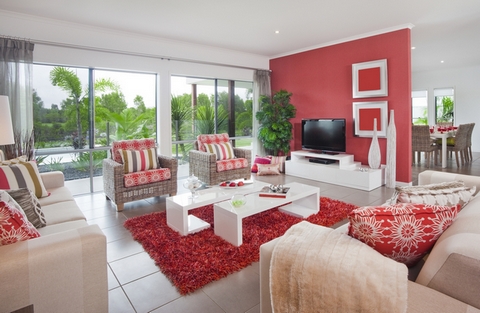


You can accentuate the part of the wall on which you plan to place an expensive painting or other luxurious decor. It is customary to decorate the wall near the fireplace in a special way. Here we are already talking about solving decorative problems.
Partitions, piers, and projections can also be accentuated. Highlighting these areas allows you to more clearly separate zones and rooms. This option also works for zoning.
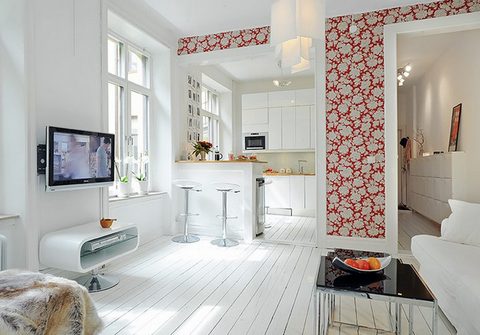

Parts of the walls are distinguished in corridors and halls. The area is divided into fragments - this makes the hall not so monotonous and dull.
Accent walls are also decorated in bathrooms. Walls behind the toilet and washbasin, as well as near the bathtub, are often highlighted.
In addition to those discussed, other options are possible. Before deciding on an accent wall, you need to answer the following questions:
- Why do you need to highlight this wall?
- why her and not another?
It should be remembered that the accent wall draws the main attention. If you want guests to notice your collection of still lifes, do not make the opposite or adjacent wall an accent wall. It may happen that the area with still lifes will simply be ignored because a bright accent wall will overshadow it.

Accent wall in the interior: how to highlight it?
Highlighting
The most effective way to highlight a wall is to decorate it in a bright color. The richer and more contrasting the color of the main finish, the more spectacular the accent. To create such an accent wall, painting or wallpapering is usually used.
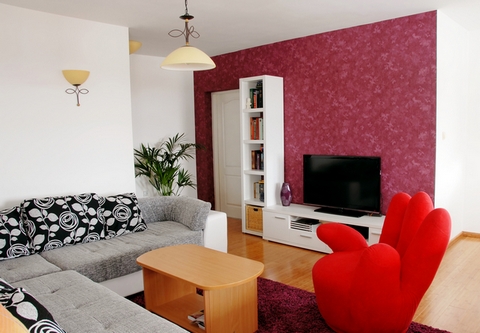
There are several design secrets that will help you make right choice colors for an accent wall. First of all, it is necessary to take into account the peculiarities of perception. “Hot” colors visually come closer to us. Therefore, if the room is narrow, you should not paint long walls in a “hot” color. “Hot” colors include red, orange, warm and many of their shades. If you paint a long wall in a narrow room in one of these shades, the room will visually narrow even more.
But one of the short walls can be made “hot”. Thanks to this, the room will visually decrease in length and appear a little more square.
Cool shades, on the contrary, are able to move away from us. Therefore, for a long wall in an oblong narrow room, it is better to choose one of the cool colors. These include blue, cyan, violet, cold green, and many of their shades.
If you prefer a calm, peaceful atmosphere, choose a color for the accent wall that is close to the dominant color in the room. Look at the color wheel: close or, in other words, similar colors are colors located in the neighborhood.
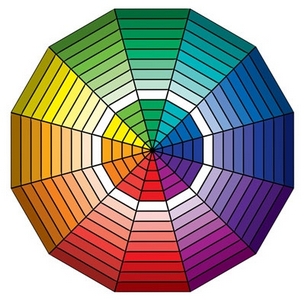
For example: If the room is decorated in blue tones, a soft green accent wall will be a similar color. The atmosphere will be quite calm and restrained, but the green wall will still stand out and attract attention.

If you want something more energetic and impressive, choose an antagonist color, that is, a color located on the circle opposite the shade that predominates in the interior. For example: if the room is decorated in beige and lilac tones, the accent wall can be made light green.
In a neutral (white, black and white, gray, beige, beige-brown, etc.) room, the accent wall can be absolutely any color - for example, your favorite one.
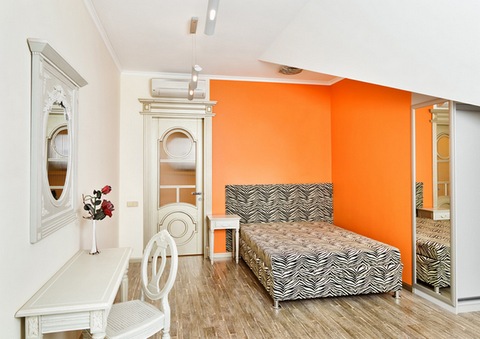
Highlighting with an ornament or pattern
To make one wall different from the others, you can use not only color, but also drawings, patterns, and ornaments. This will introduce new shapes and lines into the interior, which will allow you to influence the perception of the geometry of the room. In addition, the drawing of an accent wall can work on the idea, creating a particular mood.
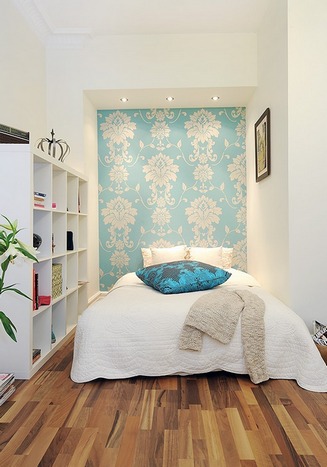
For example, an accent wall could be striped. If the stripes are placed horizontally, the accent wall will visually expand, and the room will seem a little more spacious, but lower. In addition, a striped wall will create some dynamics and make the room more energetic.
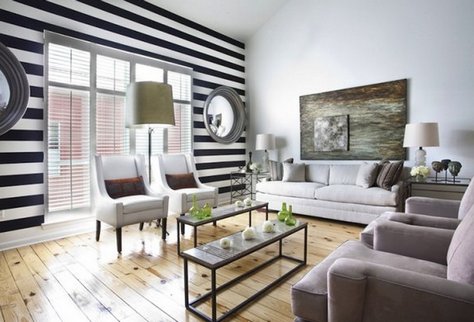
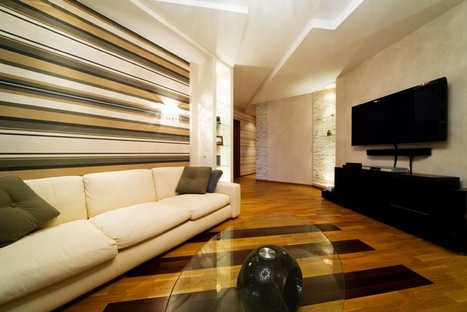
Floral ornaments will soften the atmosphere. Even if the room contains rough furniture and large number technique, thanks to the floral accent wall the room will turn out to be balanced, cozy, pleasing to the eye and not at all rude. But a checkered accent wall in the interior, on the contrary, will add brutality and some stiffness to it.

Read more about the role and perception of drawings, patterns and ornaments in our articles:
Accenting with patterns and ornaments is especially suitable for those who prefer monochrome interiors. You don't have to enter additional colors. Let the accent wall be made in the same color as the rest of the surfaces, but thanks to the ornament, this wall will stand out from the general space and become dominant.
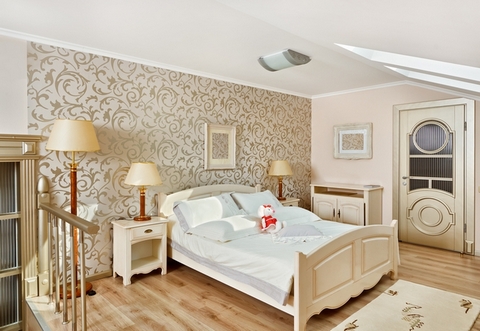
Highlighting with texture
You can rely not on color and design, but on the texture of the surface. Adding new textures to the interior makes it deep, heterogeneous, and interesting. An accent wall can be finished with stone, tiles, mosaics, wood panels, bamboo, etc.
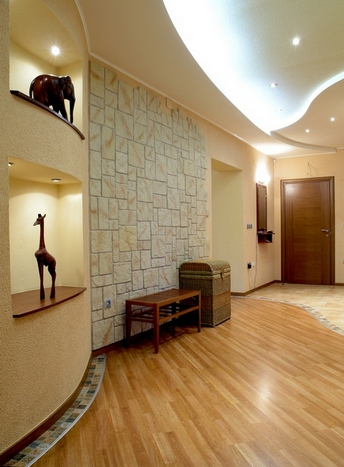


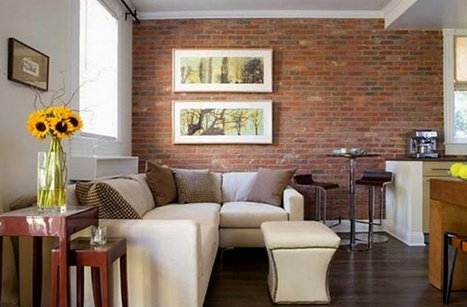
Brick and stone will fit perfectly into both urban and rustic styles. Wood and bamboo will emphasize the rural or natural component. Mosaics will decorate an interior where the emphasis is on decorativeness and luxury (for example, in the Arabic style).
Highlighting the plot
There is an opportunity to kill two birds with one stone: highlight a wall, ridding the interior of flat impersonality, and introduce a thematic component into the room. To solve these problems, photo wallpapers are usually used.
If an accent wall is created using photo wallpaper, the decor in the room should be kept to a minimum. And the palette should be quite meager. Otherwise, it will be difficult to avoid some redundancy that tires the eye.
How to choose a subject for an accent wall? If you don’t want to introduce an additional theme, you can stick to a neutral subject - for example, an image of plants. To emphasize the modern urban essence of the interior, use photo wallpaper with a fragment of a city street or building. If you want to emphasize the “pastoral” nature of the interior, choose photo wallpapers with a natural or rural theme.
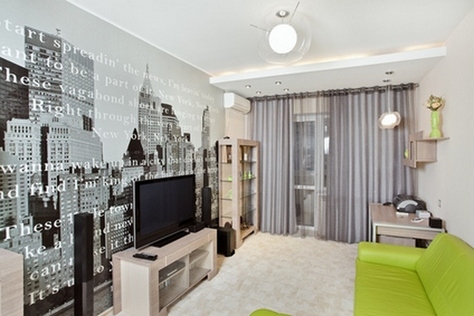
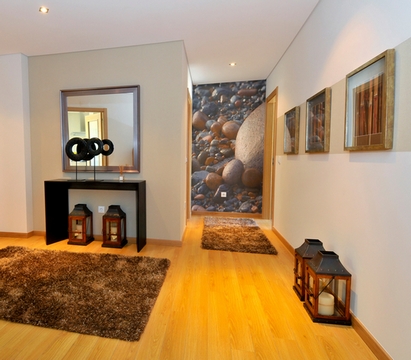
In addition to photo wallpaper, there are other options for highlighting the subject. For example, an accent wall can be papered... . This will support the theme of distant travels present in the interior.
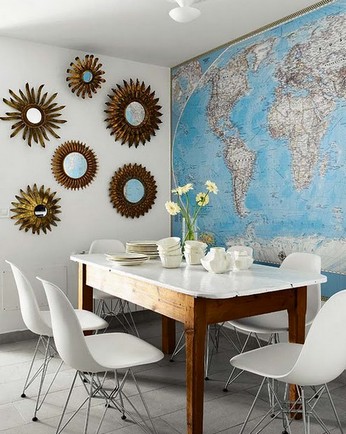
A more expensive and incomparably beautiful way to create a thematic accent wall is a story painting, a fresco.
Accent wall in the interior: what to tie it with?
Is it worth doing something to support the color and pattern of the accent wall? This is optional. An accent wall can stand alone, not depending on anything and not being combined with anything. However, this solution is successful mainly only for light, neutral and rather featureless interiors. If there are several different colors in the room, it is advisable to support the accent wall with something. For example, other accents in the same color: pillows, carpet, lampshade, or even pieces of furniture.